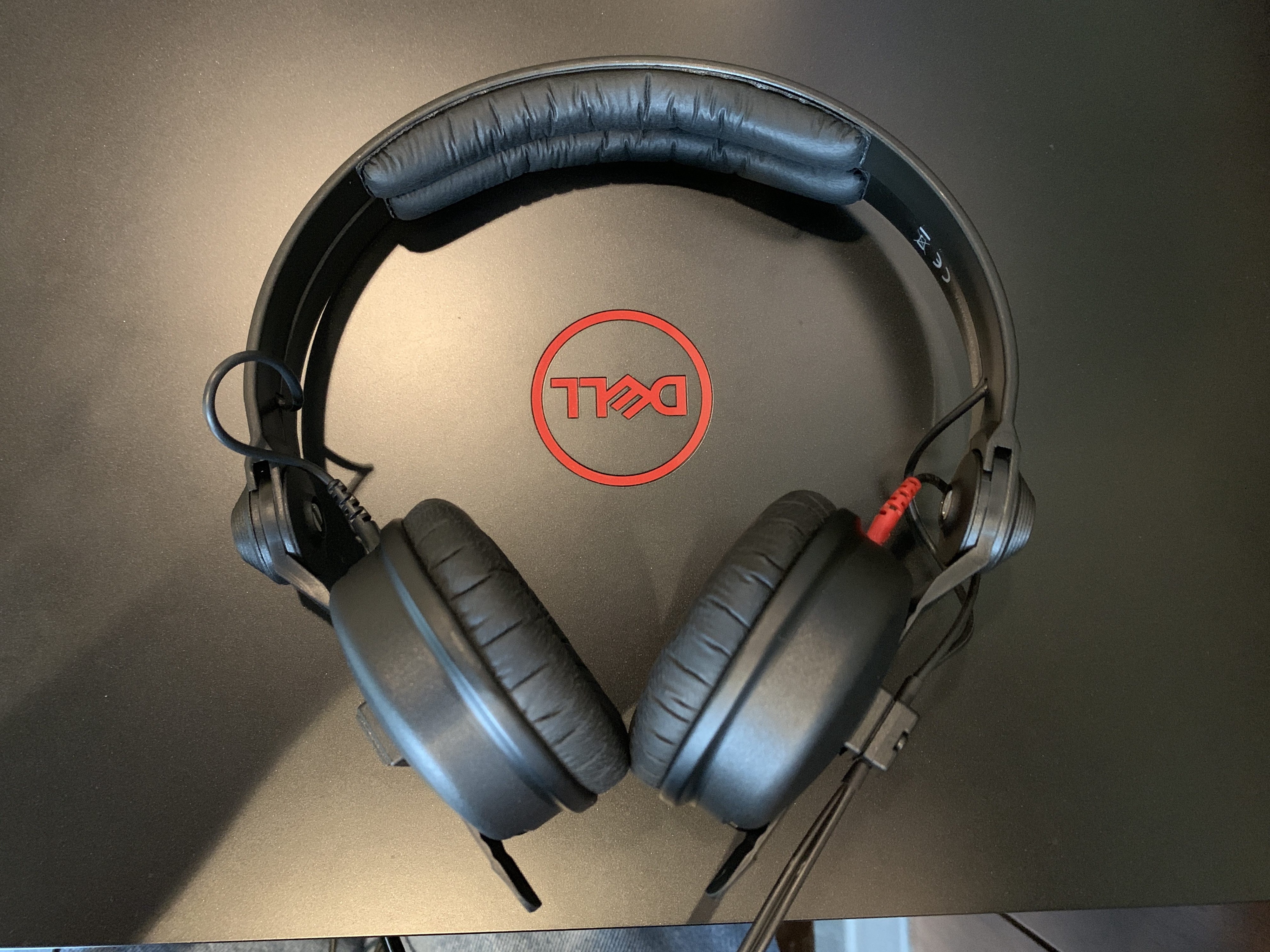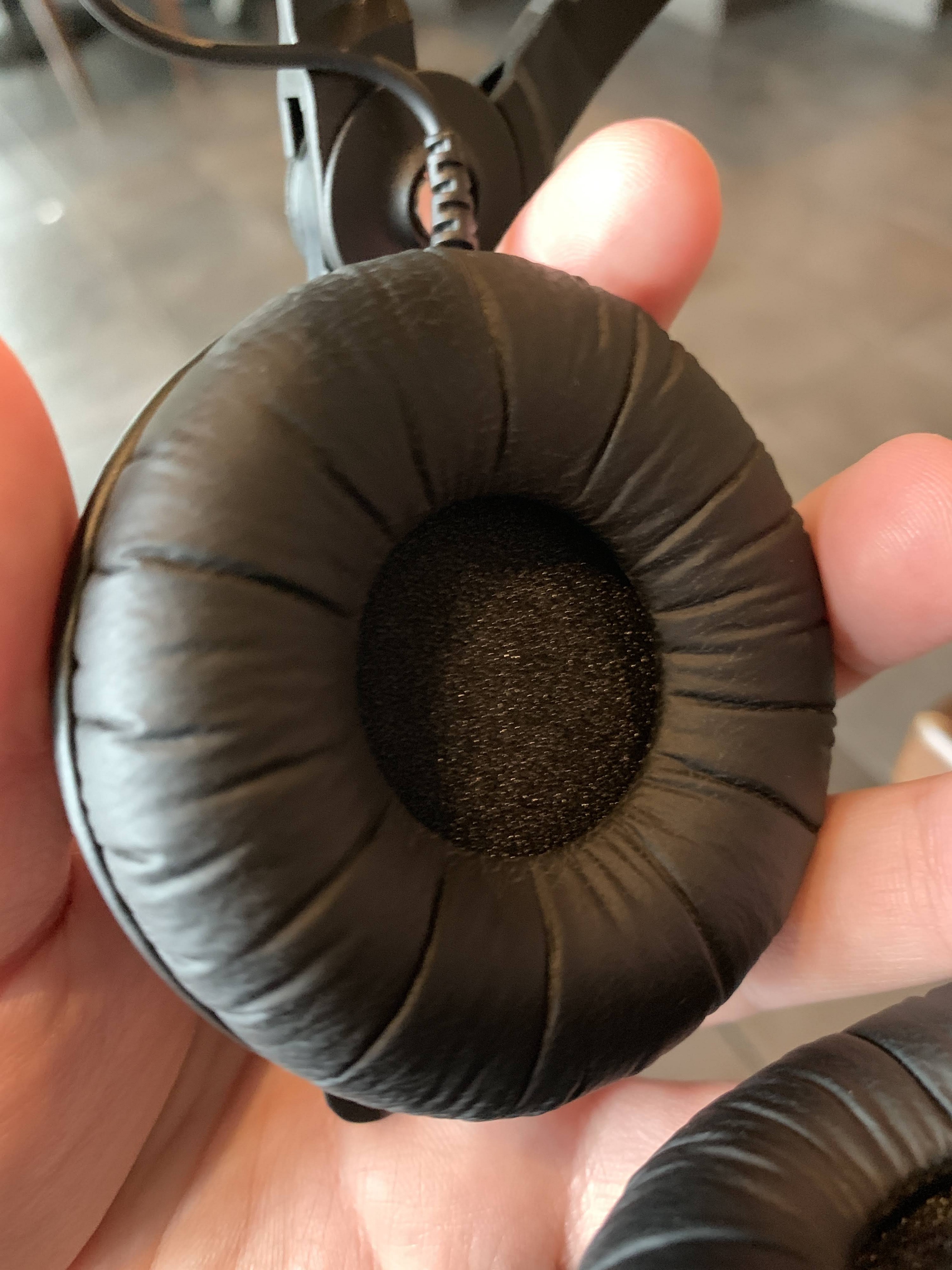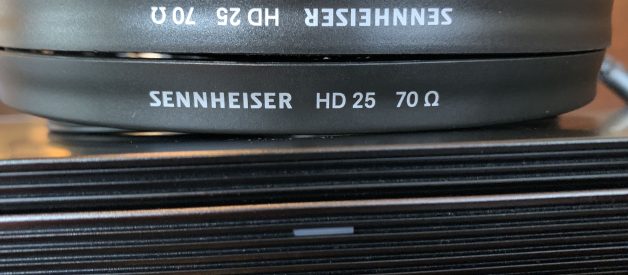A professional-first product with remarkable staying power

Over the last five years, I?ve watched numerous iconic studio headphones make their way onto the recommendations lists of reviewers and into the hands of everyday audio listeners.
Many of these products have some amount of obvious crossover appeal. Sure, they were originally built for working environments, but a headphone is a headphone. They?ve got pads, a headband, and a ?flat? sound signature?isn?t that what you?d also want for a casual listening environment?
The M50X, 7506, DT770, HD600, and many others have found their way out of the pro audio world, thanks to straddling the line well enough to work for all sorts of use cases. The M50X even got a consumer-focused Bluetooth release.
Sennheiser?s HD25 couldn?t be farther from having crossover capability. Its wonderful sound signature would probably please most consumer listeners, but everything else about it screams ?professional, working headphone.?
It?s weird and idiosyncratic in so many ways, and sticks out compared to the rest of Sennheiser?s product lineup. I kind of love it.

OVERVIEW
The Sennheiser HD25 is an on-ear, closed-back wired headphone that retails for about $149 US. Just to keep things confusing, it comes in a variety of different models?one of which isn?t really the same headphone at all.
The HD25 and the HD25 Plus ($199) are both the same thing, with the same basic design, build, and drivers. The Plus version adds an extra pair of ear pads, an extra cable, and a carrying bag.
At the other end of the price spectrum is the $99 HD 25 Light. The HD25 was originally developed as a pro-audio/DJ product. One year after its release, British Airways asked for a version that could be given to Concorde passengers for in-flight noise cancellation. That special Concorde version eventually lead to the consumer-focused HD25SP, now called the HD25 Light.
In spite of sharing the same branding and a passing visual similarity, it?s an entirely different product with a different headband, and different drivers that Sennheiser has attempted to tune for the same sound signature. The cable connections and ear pads are inter-compatible with the other HD25 models, but the headphone generally isn?t as well-regarded as its more-expensive siblings. I?ll take a look at it at some point in the future.
Sennheiser has also released a few limited edition versions of these over the years, with aluminum ear cups and different cosmetic designs. And they also used to come in a few different impedance variations, but the 70 ohm model is now the main one.
Phew.

DJ headphones and pro monitoring headphones need a few things in order to work well for those professions.
They need a relatively strong bass response compared to the rest of the signature, and high power handling capability, so that DJs can crank them up a bit to hear the bass beats in tracks without blowing out their gear or their ears with the non-bass components of the audio. They need high isolation from ambient noise. And they need a rugged build that?ll survive the rigors of a tough environment.
The HD25 delivers all of these things, and feels more purpose-built to these ends than basically any other headphone.

SOUND QUALITY
I?ve come to expect a certain type of sound from Sennheiser?and the HD25 is different enough as to be surprising. And impressive.
Sennheiser is most known for their open-back headphones, and their somewhat-relaxed sound signature that their critics often refer to as ?veiled.? They typically deliver accurate bass and midrange, and a treble region that?s been gently sculpted downwards to offer a good balance of detail and gentle listening.
The HD25 has the most aggressive sound signature I?ve heard out of a Sennheiser headphone. It?s powerful, exciting, intense, and yet still somehow accurate enough that I don?t feel like I?m listening to dreck.
Its signature has a strong overall bass response, with particular energy in the mid and upper bass that?s surprising. It?s not quite enough to be a pounding thumpy basshead-style of sound, but still present and voluminous. The midrange is the classic flat Sennheiser perfection, with wonderful tonal clarity and accurate tambre. And the treble is both louder and quieter than I expected, with a big push in the mid/upper treble range that makes things a little gritty before the normal Sennheiser roll-off.
The result is a headphone that?s indeed great for DJ and production monitoring purposes, and is also reasonably fun to listen to?somewhat like the other studio headphones that have made waves in the consumer space. It doesn?t have the flat, even, balanced character that most Sennheiser products do. Instead, it?s got a little bite and energy to it.
It?s a great listen for my personal audio tastes, both professional and personal.
Left-right imaging is super accurate, and the soundstage is intimate and precise, so if you need to do any sort of channel balancing work, this is a good option.
In the last week of listening, I?ve been really impressed at how well these split the difference between a ?fun? and a ?balanced? sound. I?ve never really been tempted to call a Sennheiser headphone fun before, but their DJ roots also make them a solid listen for pop music, movies, and games.
That is, if you can find a good fit on your head.

COMFORT/ISOLATION
I don?t usually like wearing on-ear headphones. I have a big head, and I wear glasses. Most on-ear headphones barely fit on my head due to their smaller size, and even the ones that do tend to pinch my ears after around 20 minutes.
The Sennheiser HD 25 potentially offers a reasonably comfy fit for a tight, small, closed on-ear headphone. You?ve just got to be willing to fiddle with it.
These might possibly be the most adjustable headphones I?ve ever used. The cups have a wide range of up and down size adjustments, and even on my large head I have a few extra clicks of adjustment size. The cups offer a good bit of vertical and horizontal rotation in their mounting system, and their circular nature means that you have a wide range of options for where you want to place the headband on your head.
Further, the headband itself is highly adjustable. The HD25 features a split headband design, and adjusting the level of split affects the clamping force and the point of pressure between the cups and your ears.
I spent the entire first day I owned these fiddling with the fit,and I still like to mess with them a bit every time I wear them. I?ve tried closing the headband, opening it, putting it towards the front and the rear of my head, and adjusting the cups up and down, and towards the front and back of my ears. I finally settled on having the headband split wide open and leaving the cups three clicks from their maximum size. I also quite like how they feel with the headband all the way closed, but when I do that I feel like I?m defeating the purpose of the split headband in the first place.
The result of all this fiddling is one of the comfiest fits that I?ve ever had out of a small on-ear headphone. I still feel some small pinching against my glasses after 30 minutes or so, but it?s quite tolerable, and when I take them off, there?s none of the lingering pain that some other consumer on-ear headphones have delivered.
The ear pads and headband padding both offer plenty of cushion, even though they don?t feel like they will when you first touch them, as they?re so small.
The HD25 is tremendously stable and rock-solid on the head when worn. It?s not going to move around, it?s going to stay right where you put it. Their clamp is the only noticeable aspect of their fit, which is otherwise light and well-balanced.
That reasonably high clamp and the closed-back on ear design give this headphone all of the passive isolation you could ever get from an on-ear pair.
While they won?t block noise quite as well as an active noise-cancellation pair, they will still effectively block out your surrounding environment. With music playing, the loud coffee shop I like to write in goes away.
If you like to wear headphones around your neck, you?re in luck. The small design here means that even though the cups don?t fold flat, they?re still quite comfy when placed down around the neck, and they won?t impede you from rotating your head. They?re easy to pop off, and depending on how well you?ve learned your preferred fit adjustment, relatively easy to pop back on.
For the DJs out there, the left ear cup can rotate up off the ear if you?d like to hear the room system. A nice touch. But it also means that cup is prone to rotating out of being lined up with the other cup, a slight challenge when adjusting for comfort in the standard wearing position.
Again, to reiterate, it takes some work to find good comfort here?more work than it probably should in a perfect world. They don?t have the ?put them on and forget it? quality that a lot of consumer models shoot for. You?ve got to work at it a little. You?ve got to move them and fiddle with them. Do so and you?ll be rewarded.
I can totally understand if you don?t want to do that. I almost gave up on them after that first day. But I?m glad I stuck around. The more-expensive HD26 offers much cushier padding and an auto-adjusting split headband, so if you like the look of these and are worried about the fiddling, those might appeal to you more?but be warned they come in at twice the price.

BUILD/DESIGN
The aesthetic design of the HD25 screams ?work gear.?
Branding is minimal and functional, even offering information about the impedance of the drivers. The entire headphone can be broken down into its individual components by hand. The detachable cable runs through a simple groove in the headband and uses the same somewhat-proprietary plug system also featured on the Sennheiser HD600 series.
You can pop the ear pads off and replace them. You can pop the drivers out of the housings. You can swap the cable orientation around so that the right ear cup rotates off your ear instead of the left cup, or if you want the cable entry to be on the other side. You can easily replace and work on every part here. It?s a true modding paradise.
None of these are features that general consumers really need, and the one they might enjoy (the detachable cable) is just hard enough to use that they probably won?t. I?ve been leaving my cable attached, and they?re small enough anyway that they still fit in my bag just fine.
Build is incredible, even more so considering that they?re made almost entirely of plastic. But it?s a high grade of thick plastic, straight out of Sennheiser?s famous materials lab. These feel stronger than most other studio headphones in the hand. The ear cups are thick. The parts are all robust. They don?t make a single creak or squeak, and when you bend the headband out your brain will swear there?s metal inside. But there isn?t.
My pair was built in Sennheiser?s new Romanian factory, opened in part to keep up with the demand created by their recent success on Massdrop.
I mean Drop. Ugh.
So if you?re used to these coming from Ireland and see a newer pair from Romania, don?t worry about them being fakes.
If you need a workhorse headphone that can live in a bag, come with you on road adventures, or stay in a studio full of angry singers that throw things, then this is the pair for you. 14 years ago I worked in an equipment check-out room for a college video production program, and I wish we?d had these to give out to students. You?d have to intentionally try to break them.
Even the cable gets in on the high build quality, with a steel wire running inside and a thick angled unimatch 3.5mm plug on the end and an included 6.3mm adapter. On the plus side, this makes the cable quite straight and easy to untangle. On the minus side, if you intentionally kink the cable it will retain the bend until you un-bend it. Don?t sit there kinking the cable, and you?ll be fine.

FINAL THOUGHTS
The Sennheiser HD25 is a lightweight, robust, fiddly headphone that provides excellent sound, high potential comfort, and is completely designed around working environments. If you?re looking for a pair that provides the creature comforts one might want for a nice gentle home-listening experience, look elsewhere. But if you want a dependable thing you can throw in a bag, and you need to mix/monitor/DJ on the go, or just work in the world?s loudest office and don?t want to have to recharge a battery all the time, these are great.
I guess they?re a fine home listening pair too, but you have to know what you?re getting in to.
You won?t need a special amp to power these, but the sound will keep up with whatever level of volume you throw at it. I found myself wanting to listen to these a little louder than I normally do, just due to their DJ-style sound signature.
You can certainly find friendlier headphones for $149, and even some that might sound better to you depending on your personal tastes. I?d steer most people looking for studio gear towards the DT770 or M50X before these?unless you?re that certain person who loves the idea of a robust little monster of a portable headphone.
These are rather unlike anything else that Sennheiser makes, and I?m happy they?ve stuck around so long. They deserve their reputation, and are a rare on-ear headphone that I enjoy.


